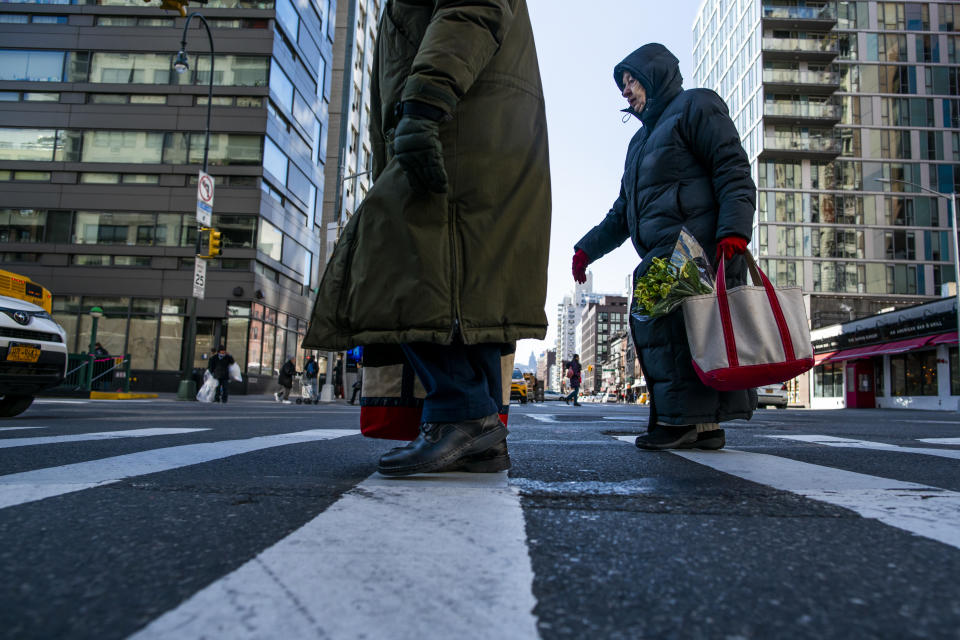Coronavirus, consumer prices: What to know in markets Wednesday
Investors will continue to monitor the coronavirus outbreak Wednesday and its impacts on financial markets and the economy.
On Tuesday, stocks rocketed into the close, with each of the three major indices ending the session more than 4.8% higher. The Dow’s surge amounted to a more than 1,100-point gain, recovering more than half of the prior day’s losses.
The jump came as investors hoped policymakers would follow through with further stimulus to help counteract any economic fall-out from the outbreak, which as of Tuesday included more than 116,000 infections and 4,000 deaths. Concerns over the effects of the global outbreak have stirred up a whirlwind of volatility in risk assets since late February.
“It’s market March Madness at the moment, complete with surprising losses, upsets, and comebacks,” Mike Lowengart, managing director of investment strategy at E-Trade Financial Corporation, said in an email Tuesday. “[Monday’s] volatility harkened back to ’08 levels between VIX highs and SPX lows, yet today we’re seeing the markets recoup yesterday’s losses on the news of possible payroll tax relief with energy and financials leading the charge.”
“That said, it’s impossible to know when the markets will hit bottom, and any bad or uncertain news could send us back into a tailspin,” he added.
On Wednesday, investors will receive new domestic economic data on consumer prices, with the Bureau of Labor Statistics releasing its monthly consumer price index (CPI) at 8:30 a.m. ET. But with inflation levels persistently subdued, the data will “likely be a non-event,” Lowengart said.
Consensus economists expect the headline CPI will be flat in February versus January, according to Bloomberg consensus data. This would represent a deceleration to zero growth after January’s 0.1% month on month rise. CPI is anticipated to have risen 2.2% over last year, also slowing after January’s 2.5% jump.
Declines in energy prices in February likely weighed on consumer prices overall, though Wednesday’s print will not capture any impact from the crude oil price sell-off from the beginning of this week.

Excluding more volatile food and energy prices, CPI is expected to have risen 0.2% in February. CPI excluding food and energy prices likely rose 2.3% year over year, matching January’s pace.
While it still may be early to see material effects from the COVID-19 outbreak in domestic economic data, some categories in Wednesday’s CPI release may show initial signs of impact, some analysts said.
“There are upside risks to consumer goods that have a high share of imports from China, which account for about 10% of core CPI. These products include furniture, toys, apparel, etc., where the share of imports form China is around 40%,” Credit Suisse economist James Sweeney said in a note Friday.
“If the shutdown measures in East Asia intensify, new car prices is another place where we’d look for potential impact – during the 2011 Fukushima event, near car CPI had several months of strong readings most likely explained by auto supply disruptions in Japan,” he added. “A potential offset is airfare and hotel prices, where a demand shock could exert a negative impact.”
—
Emily McCormick is a reporter for Yahoo Finance. Follow her on Twitter: @emily_mcck
Read more from Emily:
How legal weed disrupted this e-commerce flower startup’s supply chain
OKCupid is changing how people use dating apps amid an international expansion
‘Most of the job growth is happening with people over age 55’: Economist
Netflix 4Q subscriber growth tops expectations, but guidance disappoints
Tesla 4Q earnings top expectations, company sees 500K+ deliveries in 2020
Follow Yahoo Finance on Twitter, Facebook, Instagram, Flipboard, LinkedIn, and reddit.
Find live stock market quotes and the latest business and finance news
